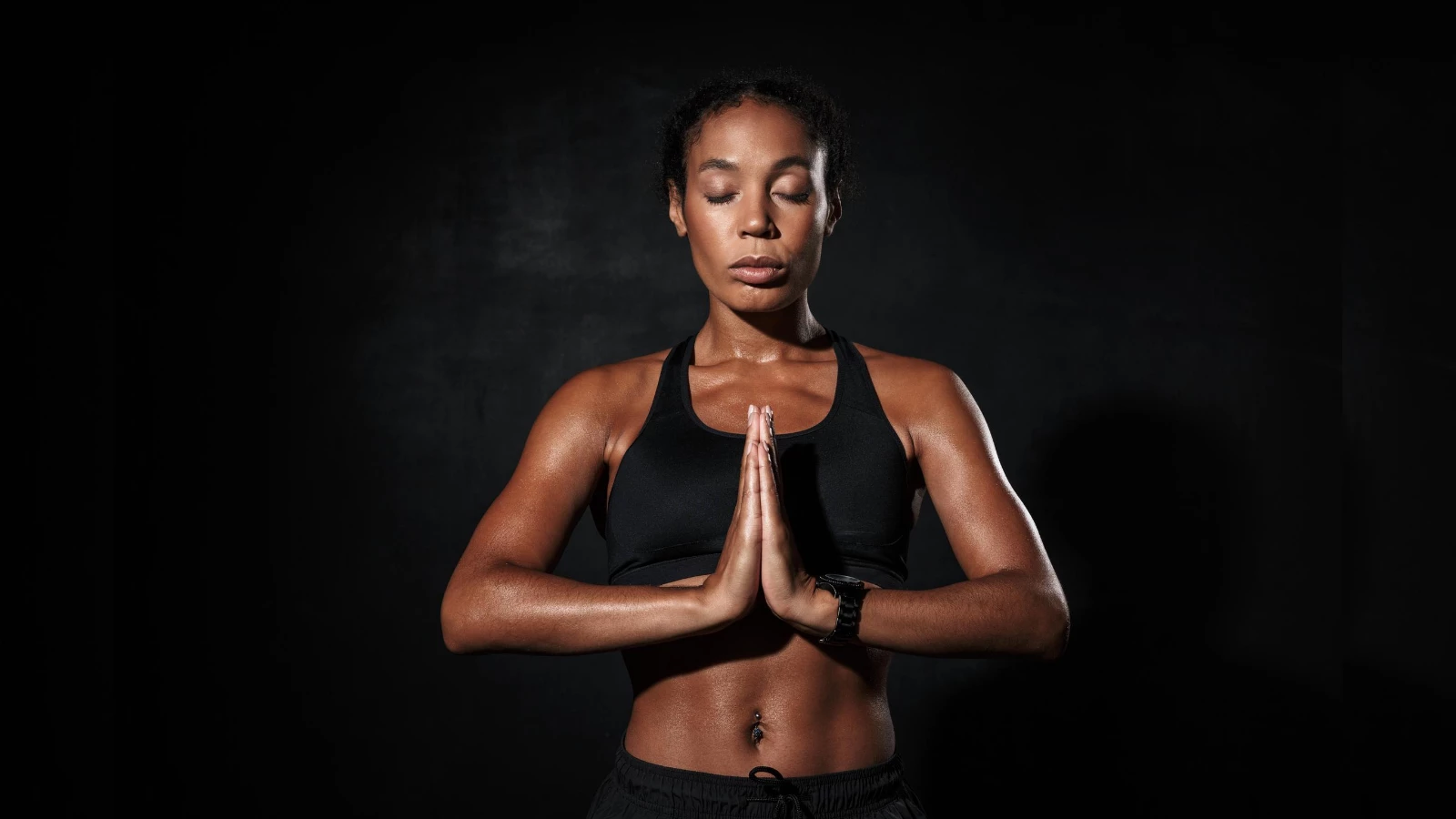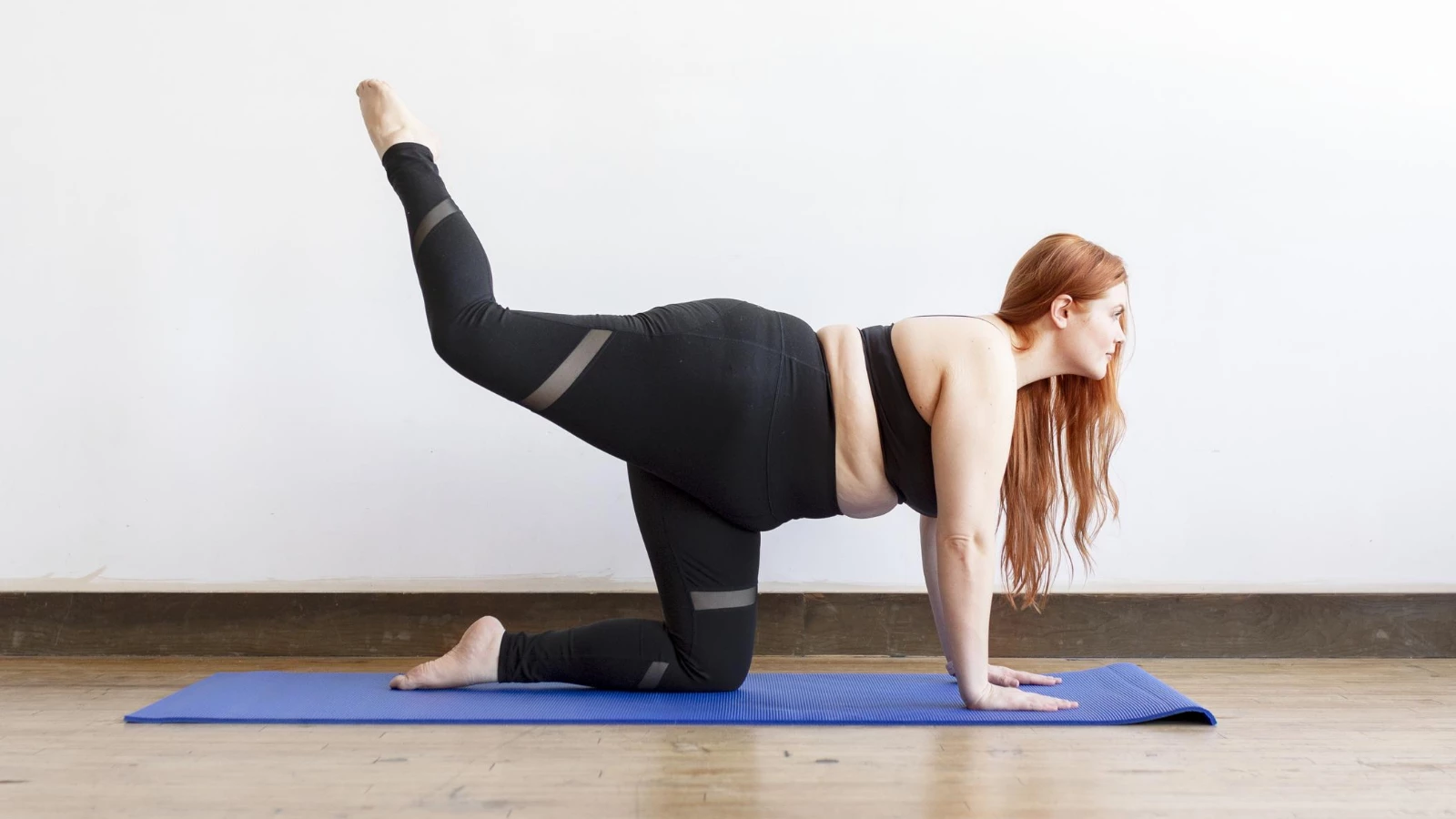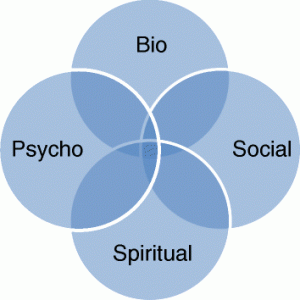How Yoga Can Help Heal Generational Trauma

On occasion, people offer me alcoholic beverages. Out of awkwardness or embarrassment, I used to quip, “No thanks, I come from a long line of Irish drunks.” But when I started studying trauma, I began to understand that the alcoholism that has insinuated itself into my Irish bloodline is a lot more nuanced and complicated than that callous remark could possibly convey.
My Irish ancestors left during the great famine and sought refuge in Boston, where they encountered poverty and discrimination. Although traumatic, it was better than staying to starve in Ireland and certainly better than the disenfranchisement and genocide that their Celtic ancestors had long suffered under the battle axe of invaders and colonizers.
As I began to understand generational trauma, I started to feel an increased empathy for my ancestors. I stopped saying, “I come from a long line of Irish drunks.” It didn’t sound very funny anymore. I have inherited the generational trauma of a people who were oppressed, brutalized, spiritually and politically disenfranchised, culturally crushed, and left landless, impoverished, grief-stricken, and heartbroken. Still, somehow, my ancestors managed to survive, rebuild their lives, and thrive—like flowers emerging from cracks in the pavement. Incidentally (and understandably), many of them self-medicate with alcohol.
What Is Generational Trauma?

Scientists are not quite sure how far back the trauma imprint goes, but they do know that the development of your own nervous system and your capacity for resilience is affected (at minimum) by your grandmother’s trauma history. (1) Animal studies have shown that imprint can last up to 14 generations. (2)
My family’s story of generational trauma, and how it has helped me better understand myself and heal, is by no means a unique narrative. The reality is that everyone—certainly people of color, but also even those of the British-est of British descent—carries pain in our bodies. This pain could stem from the trauma that we have personally experienced, the brutality that our ancestors encountered, or the vicarious trauma that lodges itself in the bodies of the offenders and is passed down to their progeny. Hurt people hurt people. No one emerges unscathed.
As a teenager, my brother and I were fascinated with Pink Floyd’s rock opera, The Wall, and found the line, “How can you have any pudding if you don’t eat yer meat?” particularly hilarious. Perhaps, in exposing the soft underbelly of the imperialist beast, that album became so popular because it brought into consciousness the trauma of a very twisted culture of domination. Even those who have benefited from imperialist culture end up traumatized or even deranged from it.
People of color continue to endure cultures and systems of trauma that have largely dissolved from white middle-class existence. Violent racist behavior is not the result of “bad apples” (or “hamburgers” as one cop weirdly tried to argue). There is an empire behind it. The Death Star gets repaired again and again by those who have not yet been able to access the inner strength necessary to peer deeply into their own traumatic abyss and begin to heal and begin to become human. And as long as the imperialist mentality persists, trauma and pain will continue to be leveled upon the scapegoats of society.
Yoga Practice and Social Justice to heal Trauma

I learned this Sanskrit shloka from my Indian teachers: “Ātmano mokṣārtham jagat hitāya ca” (from the Rig Veda), which means that yoga is practiced for the liberation of the individual and for the wellbeing of all beings on this planet.
Because of our almost universal Western habit of seeing things from an individual perspective (and for white people, because of a culture that intrinsically privileges us), it’s much easier (and feels safer) to investigate and address trauma through an individualistic lens. But the reality is that the culture is a traumatizing one. Trauma is not solely personal; it is a biopsychosocial spiritual issue. And race is an artificial construct, the perpetuation of which continually, systemically, retraumatizes people of color, leaving in its wake perhaps 14 generations that will need healing.

In the ’80s, it was funny to think about a deranged English headmaster screaming about pudding and meat because, well, it was the ’80s, white kids getting beaten up by authority figures was mostly a thing of the past. Forty years later, I can’t even begin to imagine how terrifying it must be to live in a black body today.
There is so much waking up to do for those of us in privileged skin, mostly around removing the veils of white supremacy that we don’t even recognize we’re wearing.
I practice yoga to develop resilience—body, mind, spirit, and community. And I practice in order to be strong enough to face my demons, be they addictive tendencies, distraction, ignorance, disinterest, or intrinsic racial biases.
We are all intimately interconnected and interdependent—to each other, and to our ancestors and to this planet. The desire for social justice or dharma arises from yoga practice. Yoga practice, particularly meditation, embodies and concretizes the concept of interconnectedness and demands the right action. This is what is supposed to happen when you practice yoga. This is what the ancients taught.
If your yoga doesn’t compel you to work for social justice, then not only are you wasting your time, but you’re also contributing to the problem.
P.S. If you haven’t yet listened to this interview with Resmaa Menaken, it is really powerful and inspired this blog post. (3)
Also, read...
Yoga for Stress Relief: 2 Practices for Deep Relaxation
Feb 28 – Beth Gibbs, MA
Nourish Your Winter Body with a Restorative Yoga Practice
Feb 03 – Jillian Pransky
3 Steps to Practicing Active Happiness
Jan 15 – Sandy Blaine
Related courses
Need an Energy Makeover? How Yoga Can Help You Boost Vitality
With Olga Kabel
Keys to Finding Inner Strength: A Yogic Wisdom Path to Developing Greater Resilience
With Arielle Schwartz
Reprinted with permission from Kristine Kaoverii, Subtle Yoga.

 Committed to the widespread adoption of yoga as a population health strategy, Kristine Kaoverii Weber, MA, C-IAYT, eRYT500, YACEP has been studying yoga and holistic healing for nearly 30 years advocating, speaking, and teaching about yoga since 1995, and training educators since 2003. Her organization, Subtle® Health, LLC, provides holistic, mind-body training, education, and clinical services with the mission of enhancing community health infrastructure. She is the director of the Subtle® Yoga Teacher Training for Behavioral Health Professionals program at MAHEC in Asheville, NC, presents workshops and trainings internationally, and is frequently invited to speak about yoga at health care conferences. After completing her BA and MA at Georgetown University, Kristine trained extensively in many styles of yoga, including Viniyoga, as well as in Asian bodywork therapy and homeopathy.
Committed to the widespread adoption of yoga as a population health strategy, Kristine Kaoverii Weber, MA, C-IAYT, eRYT500, YACEP has been studying yoga and holistic healing for nearly 30 years advocating, speaking, and teaching about yoga since 1995, and training educators since 2003. Her organization, Subtle® Health, LLC, provides holistic, mind-body training, education, and clinical services with the mission of enhancing community health infrastructure. She is the director of the Subtle® Yoga Teacher Training for Behavioral Health Professionals program at MAHEC in Asheville, NC, presents workshops and trainings internationally, and is frequently invited to speak about yoga at health care conferences. After completing her BA and MA at Georgetown University, Kristine trained extensively in many styles of yoga, including Viniyoga, as well as in Asian bodywork therapy and homeopathy.
She is the author of The Complete Self Massage Workbook and has published articles in the International Association of Yoga Therapist’s journal, Yoga Therapy in Practice, and other wellness publications. Her work has been featured in Redbook, BodySense, Women’s World, Natural Health, and Lifetime TV.
Resources
- https://www.theatlantic.com/health/archive/2018/10/trauma-inherited-generations/573055/
- https://www.sciencealert.com/scientists-observe-epigenetic-memories-passed-down-for-14-generations-most-animal
- https://onbeing.org/programs/resmaa-menakem-notice-the-rage-notice-the-silence/
Recent articles
Empowered Aging: An Interview with Yoga Teacher Ellen Saltonstall
Apr 17 – Sarah Bell ERYT-500, YACEP
4 Yoga Poses to Strengthen the 4 Muscles of the Rotator Cuff
Apr 15 – Leah Sugerman, E-RYT 500, YACEP
Exploring the Link Between Sleep and Anxiety
Apr 13 – Katie Potocnik Medina, LCSW
Categories
Upcoming courses
Recent articles
Almost there...
Sorry, we couldn't find anything...
Yoga and Healthy Aging
Empowered Aging: An Interview with Yoga Teacher Ellen Saltonstall
YogaUOnline: We are delighted today to be here with Ellen Saltonstall to discuss her…
Apr 17 – Sarah Bell ERYT-500, YACEP
Anatomy
4 Yoga Poses to Strengthen the 4 Muscles of the Rotator Cuff
The shoulder’s rotator cuff is a group of four separate muscles that work together…
Apr 15 – Leah Sugerman, E-RYT 500, YACEP
Insomnia
Exploring the Link Between Sleep and Anxiety
As a clinical social worker with years of experience working with adolescents and families,…
Apr 13 – Katie Potocnik Medina, LCSW


